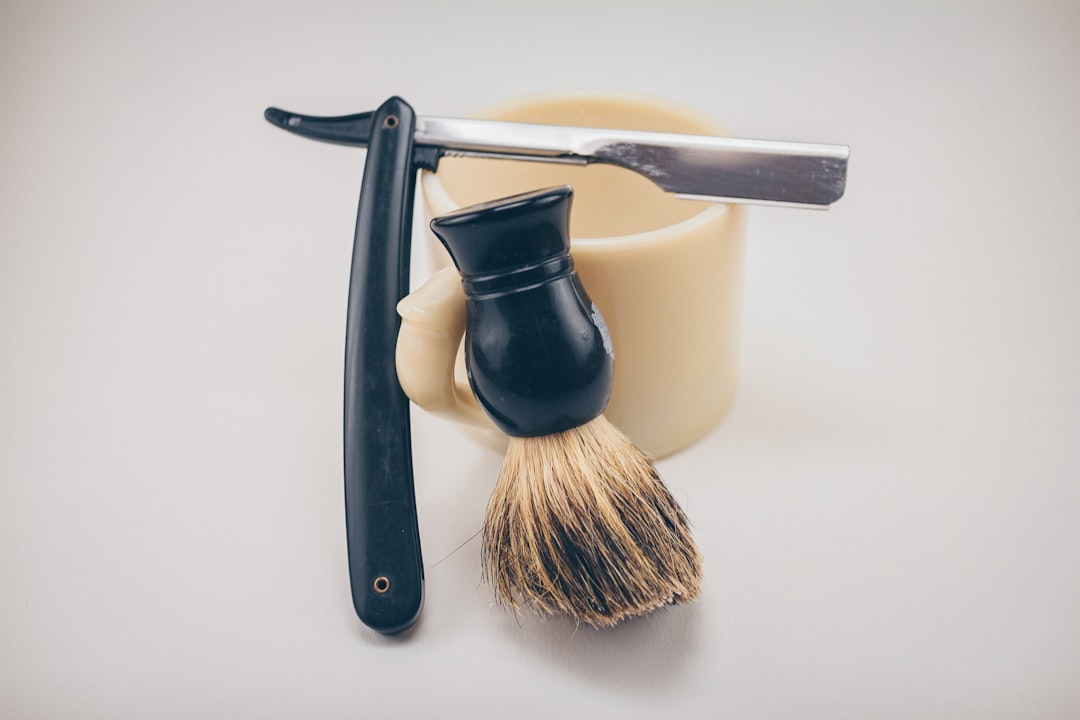Facial hair removal is a common practice for many individuals, regardless of gender. Whether it’s unwanted hair on the upper lip, chin, or cheeks, there are various methods available to achieve smooth, hair-free skin. From shaving and waxing to threading and laser treatments, the options for facial hair removal are plentiful. Many people choose to remove facial hair for cosmetic reasons, while others may do so for cultural or personal preferences. Whatever the reason, it’s important to understand the different methods available and how to properly care for your skin before, during, and after the hair removal process.
Facial hair removal can be a sensitive topic for some individuals, as it may be tied to issues of self-confidence and self-esteem. It’s important to approach the topic with sensitivity and understanding, as everyone’s experience with facial hair removal is unique. Whether you’re a first-timer or a seasoned pro, there are always new techniques and products to explore in the world of facial hair removal. In this comprehensive guide, we’ll explore the various methods of facial hair removal, how to prepare your skin for the process, step-by-step instructions for achieving smooth skin, aftercare tips, and strategies for preventing regrowth. By the end of this guide, you’ll have all the information you need to confidently embrace your smooth, hair-free look.
Key Takeaways
- Facial hair removal is a common practice for many individuals and can be achieved through various methods.
- Preparing your skin before facial hair removal is essential to minimize irritation and achieve the best results.
- Choosing the right hair removal method depends on factors such as skin sensitivity, hair type, and personal preference.
- Following a step-by-step guide to facial hair removal can help ensure a smooth and effective process.
- Aftercare is important for maintaining smooth, hair-free skin and preventing irritation or ingrown hairs.
Preparing Your Skin for Facial Hair Removal
Before embarking on any facial hair removal method, it’s crucial to prepare your skin to minimize irritation and potential side effects. One of the first steps in preparing your skin is to cleanse it thoroughly. Use a gentle cleanser to remove any dirt, oil, and makeup from your skin. This will help prevent clogged pores and reduce the risk of infection after hair removal. Additionally, exfoliating your skin can help remove dead skin cells and lift any ingrown hairs, making the hair removal process more effective.
After cleansing and exfoliating, it’s important to moisturize your skin. Hydrated skin is more supple and less prone to irritation, making it easier to remove hair without causing damage. Choose a lightweight, non-comedogenic moisturizer that won’t clog your pores. If you’re planning to wax or use a depilatory cream, it’s best to avoid moisturizing immediately before the treatment, as this can create a barrier that prevents the hair removal product from working effectively. Lastly, if you’re considering a more intensive method like laser hair removal, it’s essential to avoid sun exposure and tanning beds in the weeks leading up to your treatment. Sun exposure can make your skin more sensitive and increase the risk of complications during laser hair removal.
Choosing the Right Hair Removal Method
When it comes to facial hair removal, there are numerous methods to choose from, each with its own pros and cons. Shaving is one of the most common and accessible methods, but it can lead to stubble and potential irritation. Waxing provides longer-lasting results, but it can be painful and may cause redness and ingrown hairs. Threading is a popular method for shaping eyebrows, but it can also be used to remove facial hair with precision. Depilatory creams offer a quick and painless option for removing facial hair, but they can cause skin irritation in some individuals.
For those seeking more permanent results, laser hair removal is a popular choice. This method uses concentrated light to target and destroy hair follicles, leading to long-term reduction in hair growth. However, laser hair removal requires multiple sessions and can be costly. Another option for long-term hair removal is electrolysis, which uses a tiny needle to destroy individual hair follicles. While electrolysis is effective, it can be time-consuming and may cause discomfort.
Ultimately, the right hair removal method for you will depend on your individual preferences, skin type, pain tolerance, and budget. It’s important to research each method thoroughly and consider consulting with a dermatologist or licensed esthetician to determine the best option for your specific needs.
Step-by-Step Guide to Facial Hair Removal
| Facial Hair Removal Method | Effectiveness | Pain Level | Cost |
|---|---|---|---|
| Shaving | Temporary | Low | Low |
| Waxing | Long-lasting | Moderate | Medium |
| Threading | Long-lasting | Moderate | Low |
| Laser Hair Removal | Permanent | High | High |
Once you’ve chosen a facial hair removal method that suits your needs, it’s time to dive into the step-by-step process of achieving smooth, hair-free skin. If you’re opting for shaving, start by wetting your skin with warm water to soften the hair and open up the pores. Apply a shaving cream or gel to create a barrier between the razor and your skin, then shave in the direction of hair growth to minimize irritation. Be sure to use a sharp razor and replace it regularly to avoid nicks and cuts.
For waxing at home, begin by cleansing your skin and ensuring it’s completely dry before applying the wax. Warm the wax according to the product instructions and apply it in the direction of hair growth using a spatula or applicator. Place a cloth strip over the wax, press down firmly, then quickly pull the strip against the direction of hair growth to remove the wax and hair.
If you’re considering depilatory creams, perform a patch test on a small area of your skin first to check for any adverse reactions. Apply the cream evenly over the desired area and leave it on for the recommended time before wiping it off with a damp cloth.
For those exploring professional treatments like laser hair removal or electrolysis, consult with a licensed practitioner who can guide you through the process and provide personalized care.
Aftercare for Smooth, Hair-Free Skin
After completing your chosen method of facial hair removal, it’s essential to care for your skin to minimize irritation and promote healing. If you’ve shaved, apply a soothing aftershave balm or lotion to calm any redness or inflammation. Avoid applying harsh products or exfoliating immediately after shaving to prevent further irritation.
For waxing or depilatory cream treatments, apply a gentle moisturizer to soothe the skin and prevent dryness. Avoid hot showers or baths immediately after waxing, as this can further irritate the skin. Additionally, refrain from sun exposure for at least 24 hours after any type of facial hair removal treatment to prevent sunburn and hyperpigmentation.
If you’ve undergone laser hair removal or electrolysis, follow any specific aftercare instructions provided by your practitioner. This may include avoiding sun exposure, using gentle cleansers and moisturizers, and protecting your skin from potential irritants.
Tips for Preventing Facial Hair Regrowth

While achieving smooth, hair-free skin is satisfying, many individuals are eager to prevent regrowth as much as possible. One way to slow down regrowth is by exfoliating regularly to prevent ingrown hairs and keep the skin smooth. This can be done using a gentle scrub or exfoliating brush a few times per week.
Another method for preventing regrowth is by using products that inhibit hair growth, such as prescription creams or over-the-counter options containing ingredients like eflornithine hydrochloride. These products work by slowing down the growth of new hair follicles, leading to finer and less noticeable regrowth over time.
For those seeking more permanent solutions, professional treatments like laser hair removal and electrolysis offer long-term reduction in hair growth. While these methods may require multiple sessions and financial investment upfront, they can provide lasting results that minimize the need for regular maintenance.
It’s important to note that everyone’s experience with facial hair regrowth will vary based on factors like genetics, hormone levels, and individual skin characteristics. Embracing your natural beauty is key, whether that means embracing your smooth skin or choosing to let your facial hair grow freely.
Embracing Your Smooth, Hair-Free Look
Facial hair removal is a personal choice that can have a significant impact on an individual’s confidence and self-image. Whether you prefer a completely smooth look or choose to embrace your natural facial hair, it’s important to approach the topic with sensitivity and understanding. By understanding the various methods of facial hair removal, preparing your skin properly, following step-by-step instructions for achieving smooth skin, practicing aftercare techniques, and exploring options for preventing regrowth, you can confidently navigate the world of facial hair removal.
Ultimately, the goal of facial hair removal is not just about achieving smooth skin—it’s about feeling comfortable and confident in your own skin. Whether you choose to remove facial hair for cosmetic reasons or personal preference, it’s important to prioritize self-care and embrace your unique beauty. With the right knowledge and techniques at your disposal, you can achieve smooth, hair-free skin while feeling empowered and confident in your appearance.
If you’re considering laser hair removal, it’s important to understand the potential effects on your skin. According to a recent article on inlaserhairremoval.com, laser hair removal treatments may cause skin damage over time. It’s crucial to weigh the benefits of long-term hair reduction against the potential risks to your skin. Understanding the process and potential outcomes can help you make an informed decision about whether laser hair removal is right for you.
FAQs
What are the common methods for facial hair removal?
The common methods for facial hair removal include shaving, waxing, tweezing, threading, depilatory creams, and laser hair removal.
Is it safe to remove facial hair at home?
Yes, it is generally safe to remove facial hair at home using methods such as shaving, waxing, tweezing, and using depilatory creams. However, it is important to follow the instructions carefully to avoid any potential skin irritation or damage.
What are the potential side effects of facial hair removal?
Potential side effects of facial hair removal may include skin irritation, redness, ingrown hairs, and in some cases, scarring. It is important to choose the appropriate method and follow proper techniques to minimize these risks.
How often should I remove facial hair?
The frequency of facial hair removal depends on the method used and individual hair growth. Shaving may need to be done every few days, while waxing and threading can last for a few weeks. Laser hair removal offers long-term reduction in hair growth.
Are there any long-term solutions for facial hair removal?
Yes, laser hair removal is a long-term solution for facial hair removal. It uses concentrated light to target and destroy hair follicles, resulting in a reduction in hair growth over time. Multiple sessions are usually required for optimal results.






